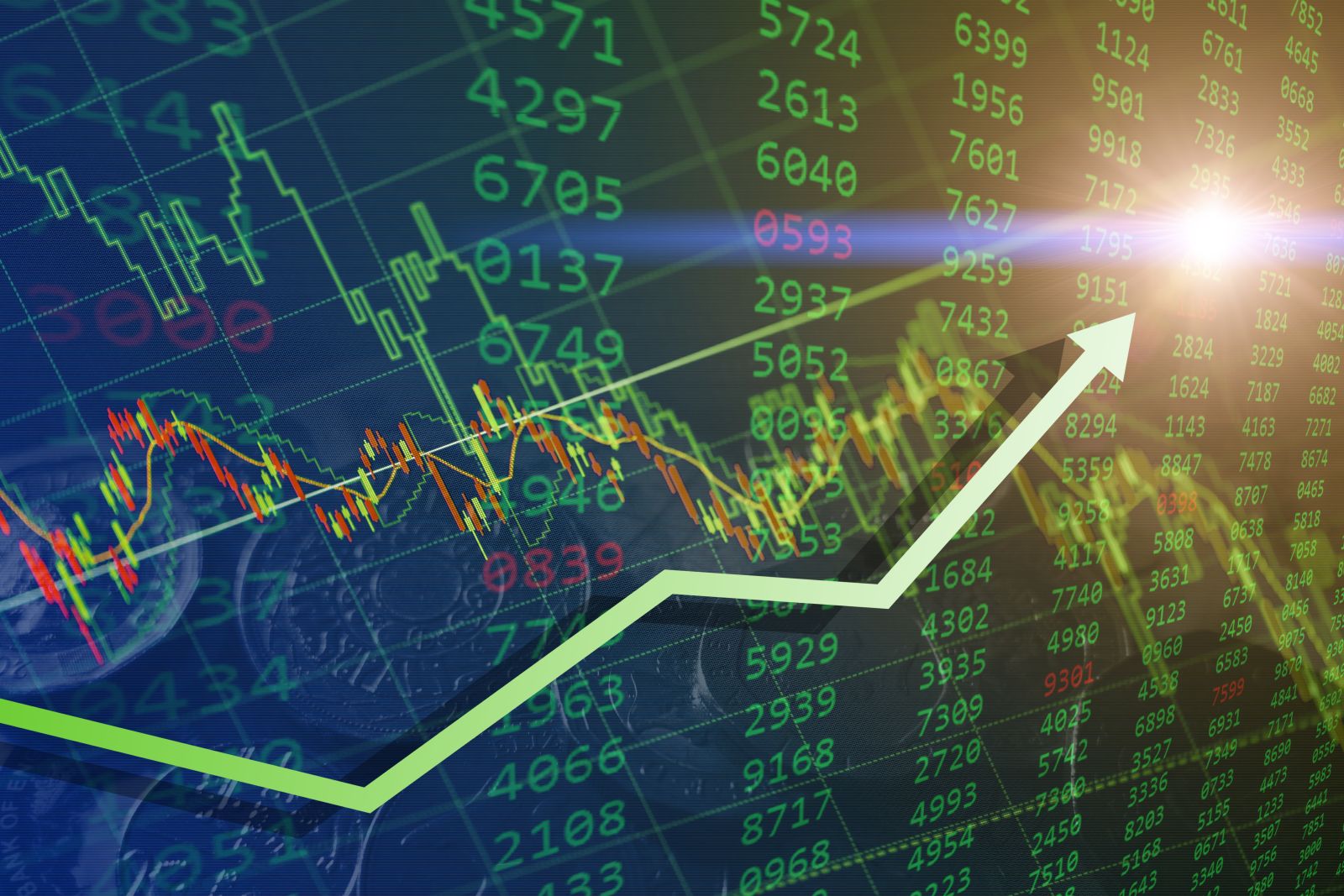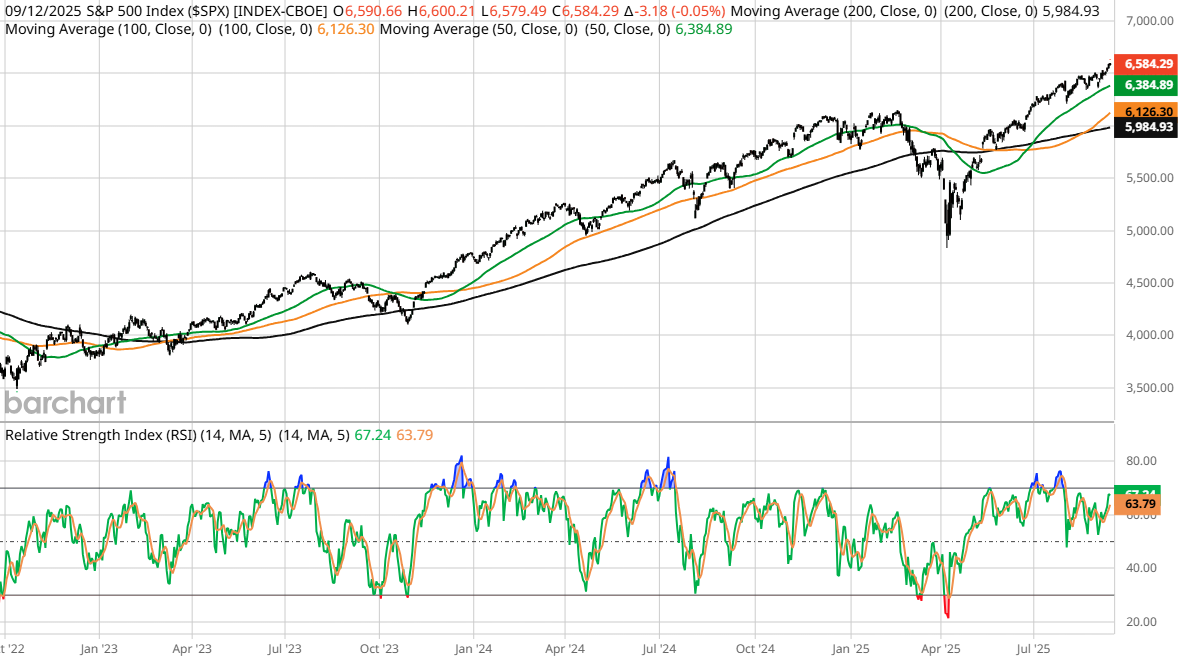- Market Overview
- Futures
- Options
- Custom Charts
- Spread Charts
- Market Heat Maps
- Historical Data
- Stocks
- Real-Time Markets
- Site Register
- Mobile Website
- Trading Calendar
- Futures 101
- Commodity Symbols
- Real-Time Quotes
- CME Resource Center
- Farmer's Almanac
- USDA Reports
The Market Isn’t Lagging - It’s Distorted: Why Investors Must Stop Treating the S&P as the Economy’s Crystal Ball

Investors believed for years that the market was the ultimate predictor of the economy. The general guideline was unambiguous: stocks anticipated six to twelve months in advance, making moves ahead of the data, leading jobs, profits, and growth. It worked often enough to feel like law. After World War II, the market rallied well before the economic recovery showed up in the numbers. Even though inflation was still a problem in 1982, equities went up, which was a hint of the long expansion to come. In 2009, with the economy still reeling from bank failures and unemployment, stocks reached their lowest point. But the rally was justified.
Those moments cemented the idea that following the market meant understanding tomorrow’s economy. It made sense in a world where active managers drove capital flows, valuations mattered, and price discovery reflected expectations rather than noise. That was the foundation for the idea of the market as a leading indicator.
But the structure has shifted. Today the forces driving indexes have little to do with foresight and everything to do with flows. Investors who continue to view the market as a magical tool are misguided.
Why The Market Became Distorted
- Passive index flows. Trillions have been shoved into ETFs and index funds over the past decade, and these vehicles buy and sell regardless of valuations or earnings outlooks. Capital allocation is tied to index weightings, not to the merits of individual businesses. When money flows in, the largest companies get bid up, pushing prices higher with zero connection to fundamentals.
- Liquidity and central banks. The expansion or contraction of the Federal Reserve’s balance sheet, along with global liquidity shifts, has a direct impact on asset prices. The rally in 2020 and 2021 was less about economic foresight and more about stimulus checks and unprecedented monetary support. When liquidity dries up, markets drop, regardless of what the fundamentals say.
- Systematic and momentum strategies. Quant funds, CTAs, and risk-parity models chase price trends and amplify moves. Their buying and selling is dictated by signals and volatility targets rather than outlook or valuation. They make the rallies crazier and the sell-offs nastier.
As a result, the market is not discounting the future in any meaningful sense. It is responding to flows, liquidity, and positioning. That distortion has left investors using the wrong playbook if they still believe indexes are telling them what the economy will look like six months from now.

The Disconnect Between Indexes And Reality
The S&P 500 is often treated as a stand-in for the entire market, but that view is flat-out wrong. A few mega-cap companies dominate the index today, accounting for the majority of its movement. When those seven names rise, the index can look strong even as many stocks lag. This concentration hides what’s really happening under the surface. Small businesses continue to face tighter conditions in relation to credit. Employment trends are uneven across industries. Manufacturing data shows signs of stress. Yet the S&P can keep climbing because money flows into the same large names that drive index performance.
The result is a growing disconnect between index levels and economic reality. On the surface, the S&P looked solid. Underneath, the foundations were cracking. For investors still relying on the S&P as a macro predictor, the signal is badly distorted. It no longer reflects a broad read on growth or risk. Instead, it reflects flows into a narrow group of stocks, leaving those who treat it as a guide to the economy exposed to false confidence.
Behavioral Traps Investors Fall Into
One of the biggest risks for investors today is behavioral, not structural. Too many still cling to the old framework that equates the market with the economy. They see the S&P climbing and assume growth must be improving. They watch a sell-off and conclude a recession is near. Both instincts are outdated but still driving how investors trade. The result is poor decision-making. Investors follow rallies because they think the market is providing a positive signal but then find out that the advance was caused by flows and not fundamentals. They panic in drawdowns, cutting exposure as if the economy were rolling over, when liquidity conditions or positioning shifts may be driving prices.
The 2023–2025 melt-up is a clear example. AI hype and easy liquidity pushed a handful of stocks to record highs while broader earnings growth lagged badly. Many assumed the rally meant the market was discounting stronger fundamentals. In truth, it was liquidity and momentum strategies chasing the same trade. The biggest mistake? Believing the market knows something you don’t. It does not happen more often today. Investors who mistake this for foresight risk are simply catching the wrong side of the cycle.
What Investors Should Watch Instead
If the market no longer provides a reliable read on the economy, investors need to look elsewhere for signals that move money. The first place is liquidity. The size of the Federal Reserve’s balance sheet, the pace of Treasury issuance, and the direction of real yields all tell you more about near-term market direction than index levels do. Liquidity pushes prices in ways fundamentals cannot. Secondly, watching how equal-weight indexes perform compared to cap-weighted indexes provides a clearer picture of whether strength is broad or confined to a handful of names. Narrow rallies are fragile, while broad participation is the only sign a rally can last. Watch the insider activity as well. When management teams and directors commit personal capital, it is one of the most reliable indicators of conviction. Unlike passive flows, insider buying reflects informed views about business value and prospects.
Lastly, keep track of spinoffs and special situations. These are catalysts tied to corporate behavior rather than macro noise. Breakups, restructurings, and asset sales unlock value because structure forces change and markets misprice it.
The true edge today comes from focusing on structure and catalysts, not from treating the S&P as a compass. Investors should anchor their process on micro events they can analyze and understand, rather than on macro guesses that depend on a distorted market signal. That is where mispricing lives and where consistent returns are built.
The New Playbook for Investors
The takeaway for investors is simple. Stop using the S&P as a proxy for economic health. The index is no longer useful for that. Recognize that liquidity is the most important short-term factor and that changes in central bank policy, Treasury issuance, and positioning can have a much bigger effect on prices than fundamentals. At the same time, shift focus back to what creates lasting value, which investors can monetize. Anchoring on catalysts, valuation, and behavior at the company level is where the edge now lives. Spinoffs, breakups, restructurings, and insider-driven change consistently generate structural alpha. These situations profit from the gaps everyone else is missing.
This is the distortion playbook. Accept that the market is distorted, and rather than fight it, use it to your advantage. Investors who adapt can profit, while those who cling to old models will keep losing money because they’re following the wrong signals.
The market is no longer a crystal ball. It is a mirror that reflects liquidity and flows. Treating it as an economic predictor is not only misguided but also costly. Investors who understand this shift will stop looking to the S&P for foresight and instead focus on where structural change creates opportunity. If you are still trading the S&P as if it predicts the economy, you are playing the wrong game. The real edge lies in understanding distortions and investing where they break.
On the date of publication, Jim Osman did not have (either directly or indirectly) positions in any of the securities mentioned in this article. All information and data in this article is solely for informational purposes. For more information please view the Barchart Disclosure Policy here.